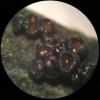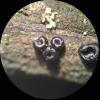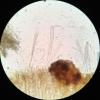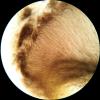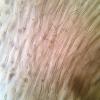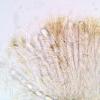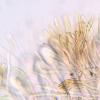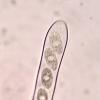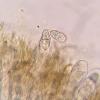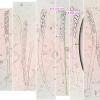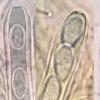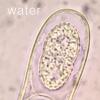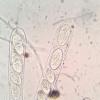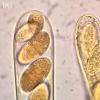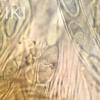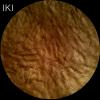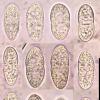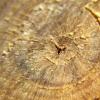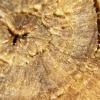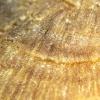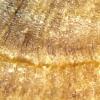
01-01-2026 18:35
Original loamy soil aside a artificial lake.The co

31-12-2025 19:27
Collected from loamy soil, at waterside (completel

30-12-2025 16:44
Pascal DucosBonjour,Une anamorphe rose stipitée, très nombre

30-12-2025 17:14
 Bernard CLESSE
Bernard CLESSE
Bonjour à toutes et tous,Pourriez-vous aider Albe

29-12-2025 10:15
Hulda Caroline HolteHello, I found and collected this propoloid ascom

30-12-2025 09:04
Hello.A Pyrenomycete sprouting sparsely but very d

29-12-2025 17:44
Isabelle CharissouBonjour,J'aimerais savoir si d'autres personnes au
tiny black gelatinous ascos
Ethan Crenson,
07-05-2024 00:04
A friend found these black gelatnous cups on a twig (might have been Vitus, maybe not). Unfortunatley they are not fully mature yet. When found they were dried and appeared to have collapsed in on themselves. When rehydrated they show a black receptical and a gelatinous yellow-brown hymenium.
The ectal excipulum seems to be textura porrecta—long undulating, slightly roughened, brown cells that run in parallel and are septate. The ends sometimes have unusual looking tongue-like heads.
Spores are still developing in the asci, but appear to be broadly ellipsoid and might ultimately have one oil drop. I noticed at least one spore that was septate (last photo).
Paraphyses filiform.
I am keeping these in a moist chamber, hoping they will mature. But in the meantime, does anyone have an idea what they might be?
Hans-Otto Baral,
07-05-2024 09:09

Re : tiny black gelatinous ascos
You mean Vitis probably. The fungus appears to be drought-tolerant, even the submature ascus looks as if alive. Did you test IKI? The apical thickening might ger much thicker when dead and perhaps stained.
The spores look multiguttulate with a central nucleus (did you mean this with the one oil drop?).
The excipulum reminds me of a Godronia. You could test KOH for a ionomidotic reaction which occurs in Godronia.
Ethan Crenson,
07-05-2024 20:57
Re : tiny black gelatinous ascos
Interesting. Yes, Vitis was what I meant. Also, it seemed to me that the spores were not fully developed and the circle at the center would emerge as an oil droplet. I am not always certain how to discern if there is a visible nucleus.
Fortunately, the specimen matured a bit and now I have more information.
Spores:
1-septate, finely warted, broadly ellipsoid, some having a gelatinous sheath in the asci. In Lugol's the septum sometimes appears sinuate. In some asci the four lower spores seem to develop to full maturity before the upper four spores:
19.5-23.5 x 8.2-11.3µm
Q 1.9-2.5
N=15
Me = 20.8 x 9.6µm
1-septate, finely warted, broadly ellipsoid, some having a gelatinous sheath in the asci. In Lugol's the septum sometimes appears sinuate. In some asci the four lower spores seem to develop to full maturity before the upper four spores:
19.5-23.5 x 8.2-11.3µm
Q 1.9-2.5
N=15
Me = 20.8 x 9.6µm
Asci:
IKI-, clavate, spores uniseriate, in Cotton Blue the walls do thicken
232-393 x 16-22.7µm
Only faint yellow pigments in KOH after more than 5 minutes (no ionomidotic reaction).
Hans-Otto Baral,
07-05-2024 22:53

Re : tiny black gelatinous ascos
Yery good! At the moment I can only find Dermatea viticola in my database but spores are smaller and Dermatea has angularis.
Ethan Crenson,
07-05-2024 23:45
Re : tiny black gelatinous ascos
Dermatea doesn't seem to be a very common genus. It resolves to Dermea on iNaturalist. I'm afraid I'm a bit lost. Also, I may be completely wrong about the substrate being Vitis as I mentioned in my first note. I guess I should try to sequence this.
Hans-Otto Baral,
08-05-2024 10:32

Re : tiny black gelatinous ascos
Vitis I think is rather easy to identify from a cross section, would that be possible? Magnification 100-200x or so.
A sequence woud really be helpful!
I made a mistake, I meant Dermatella viticola which is Thyridaria viticola which would be pleosporalean.
Ethan Crenson,
08-05-2024 19:36
Hans-Otto Baral,
10-05-2024 08:23

Re : tiny black gelatinous ascos
This looks much coniferous to me. To ensure, perhaps you can manage a small cross section with a razor blade? Anyway, I see no pores which are essential for angiosperms. The last pic with a scale would also be helpful since angiosperm pores are min. around 30 µm in diam.



